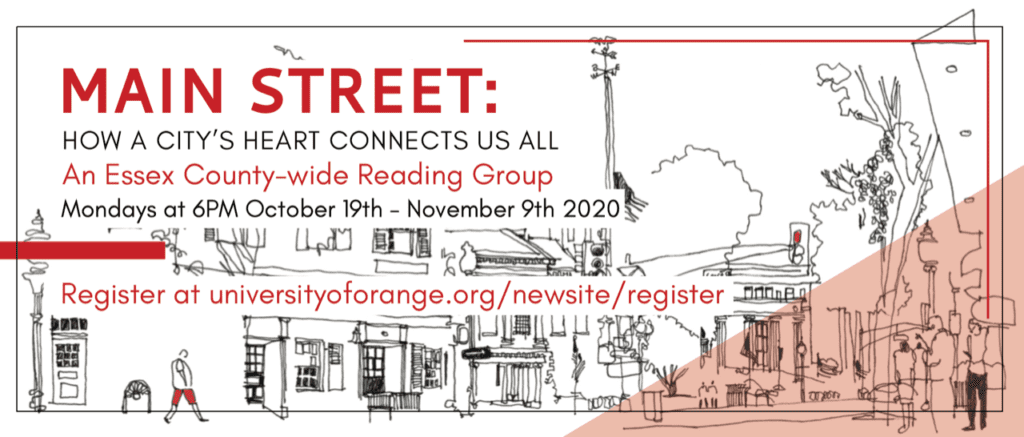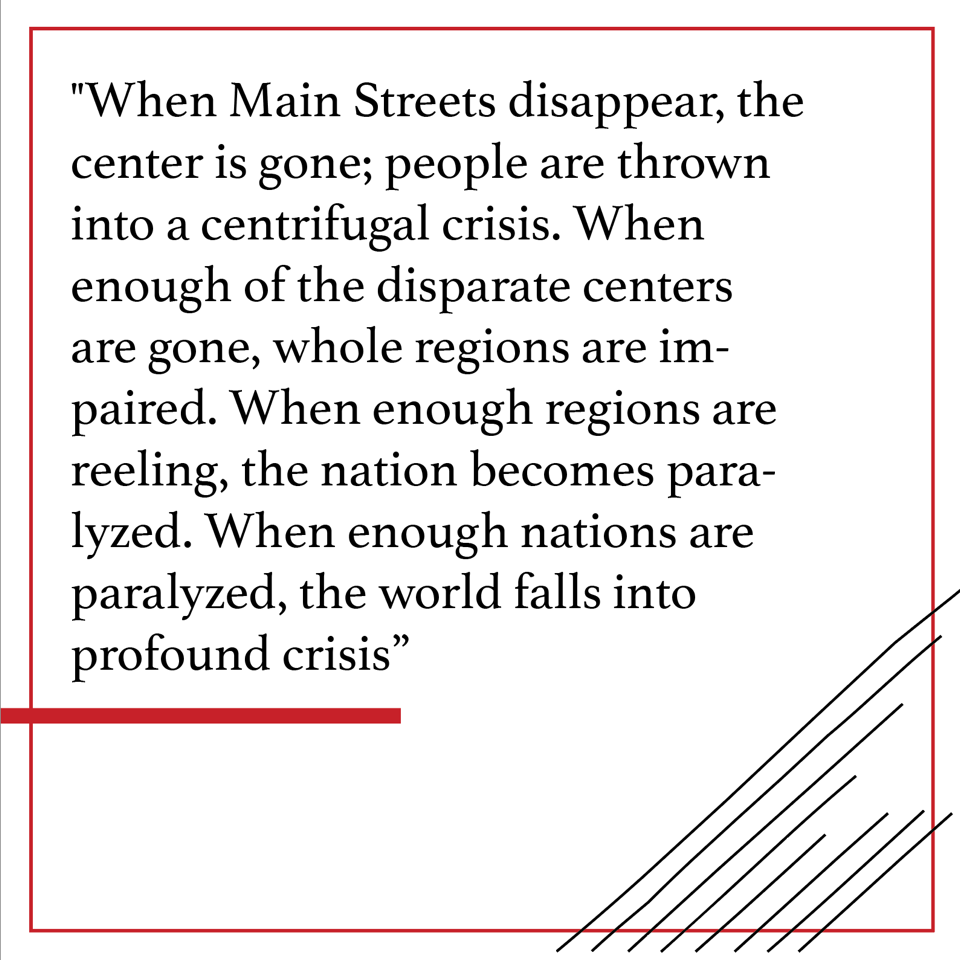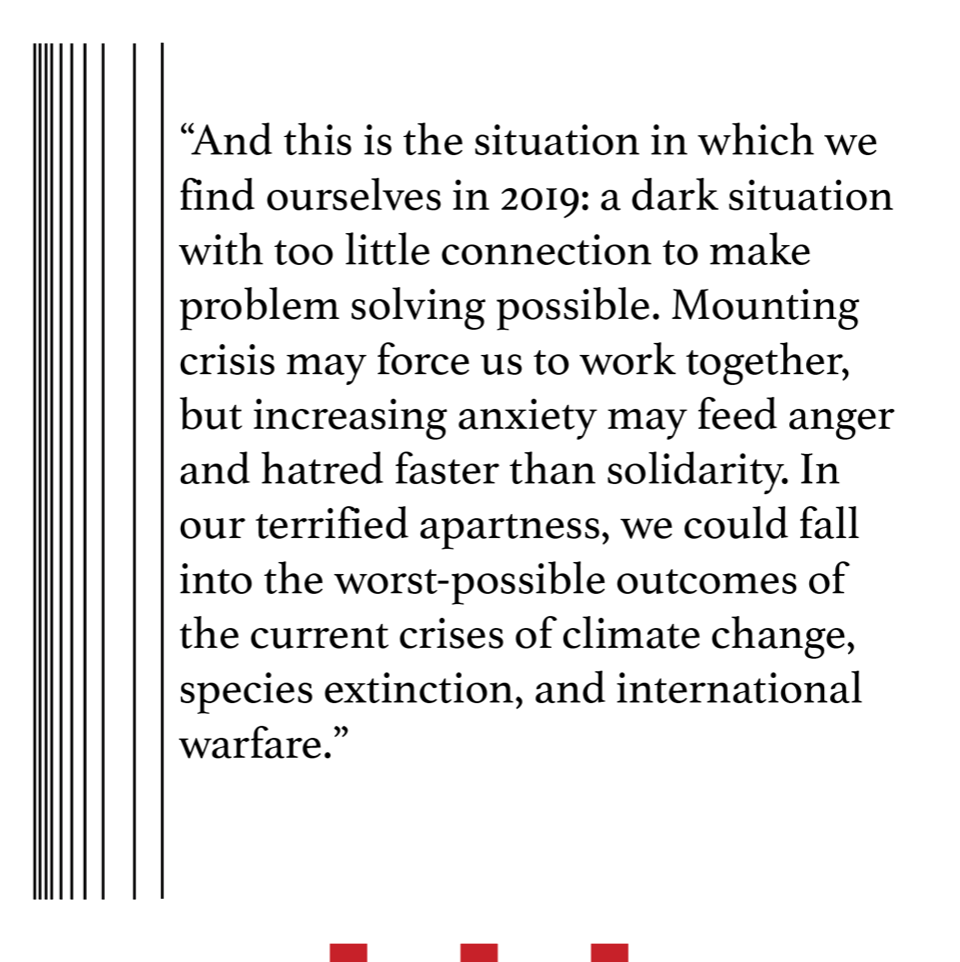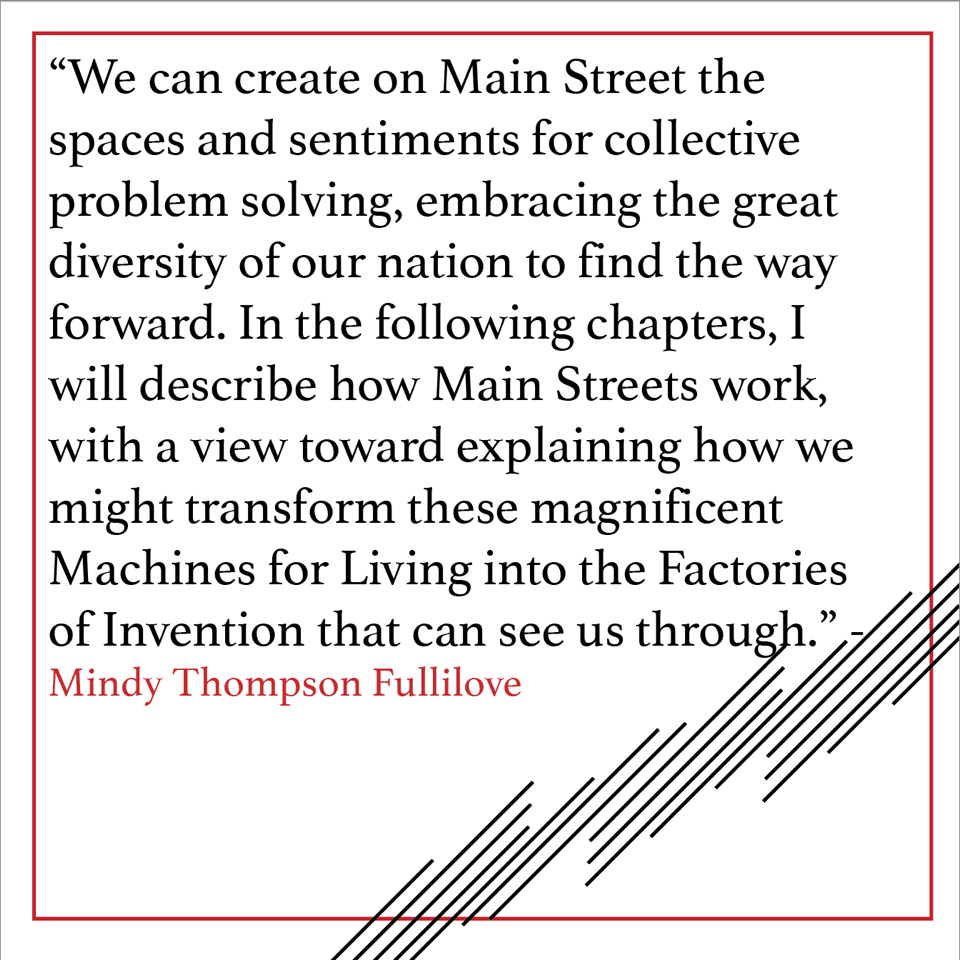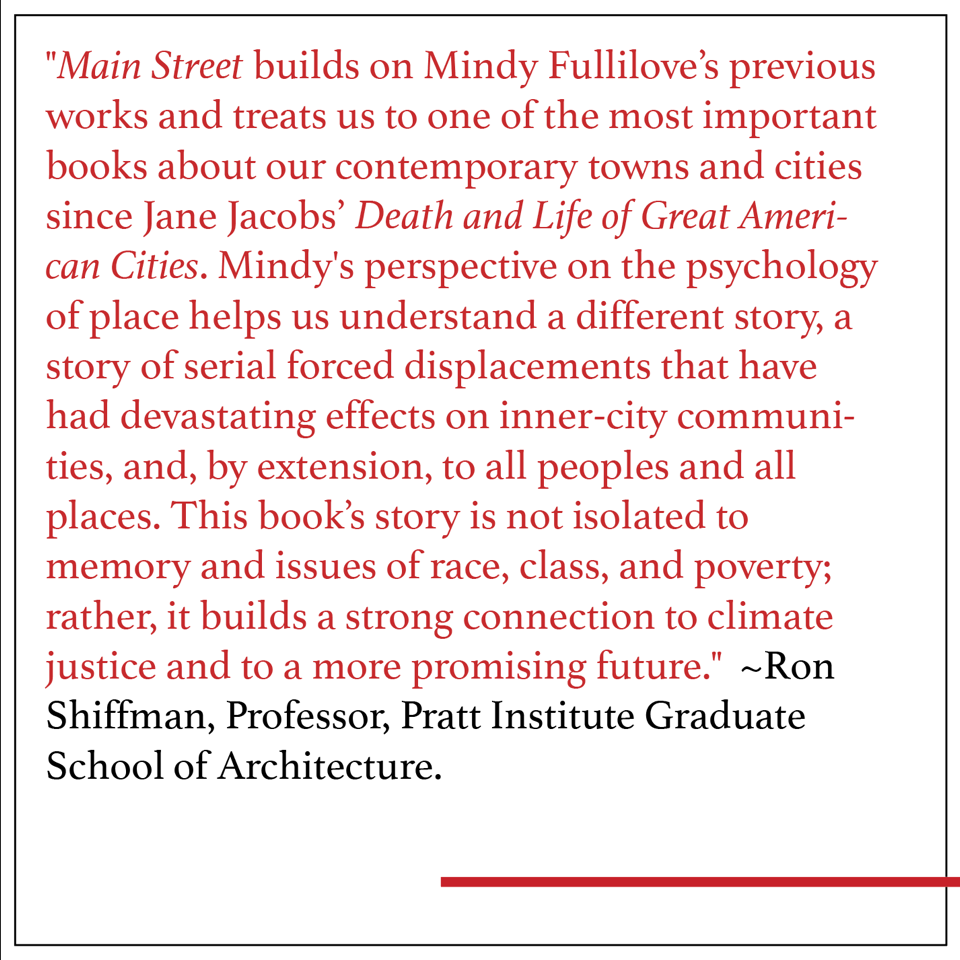We invite you to join the University of Orange in a reading group and urbanism series that will celebrate the launch of Main Street: How A City’s Heart Connects Us All by Essex County’s own Mindy Thompson Fullilove, MD. Register for free here. For information on the facilitated Stroll and Scroll walks as a part of this reading group, click here.
Main Streets are our city’s main arteries, crucial to the healthy and joyful functioning of the places where we live and work. In 2020 we find them threatened by many compounded crises. This interactive reading group will bring together people from throughout Essex county to explore, celebrate and examine our Main Streets. We will think about what forms the Main Streets that we love and what connects them all. Together we will learn how we advocate for our Main Streets to thrive and support our collective life and health.
You can buy the book here (signed copies available here).
Conversation between Mindy Fullilove and Ron Schiffman
Conversation between Jake Izenberg and Robert Sember
Group reading and discussion of “Planning to Stay”
Presentations from Bill Morrish and Rocco Gensler, Group sharing of ‘Scrolls’
See here for more information about ‘scroll and stroll’
About the book
How do Main Streets contribute to our mental health? This intriguing question took social psychiatrist Mindy Thompson Fullilove on an 11-year search through 178 cities in 14 countries. As Andy Merrifield notes in the foreword, “Mindy has drifted through a lot of Main Streets, walked them, observed, talked to people, ordinary people as well as professional practitioners. While she got to pace many miles of New York’s Broadway, eat French patisseries as a flâneuse in Gay Paree, sip çay in Istanbul, and chill in Kyoto’s dazzling Zen temples, her real concern is Main Street, USA, the more modest main stems of provincial America.” From these visits Fullilove has discerned the larger architecture of Main Streets. She observes the ways that Main Streets are shaped for a vast array of social gatherings and processes, how they are a marker for the integrity of civilization—and the marks aren’t always good.
She also looks at Main Streets as “an allée, a way that is part drama and part quotidian. While passing through, we get to look at one another, to sing, to recognize what we are, have been, might be.” Her conclusion, that Main Streets are essential for gathering people and sharing information, emphasizes that tending our oft-neglected civic and commercial centers is a task worthy of us all.
